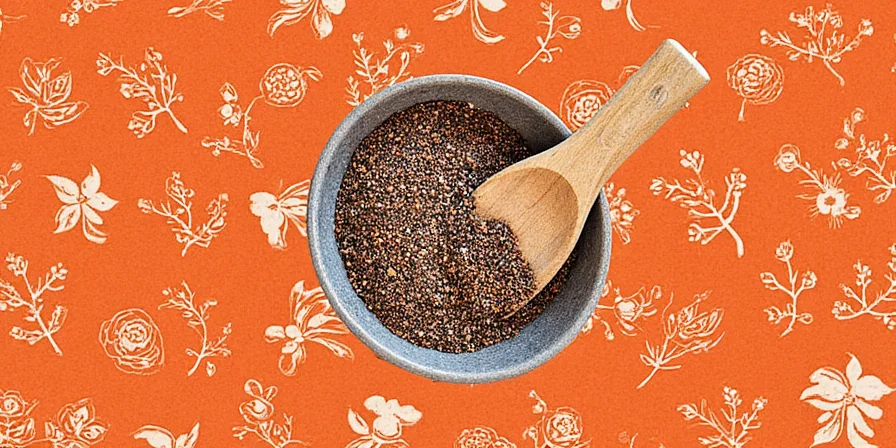If you think Japanese pepper is just that spicy powder your sushi chef sprinkles on tuna tartare, it's time to rethink. Known locally as sansho, this citrusy powerhouse has been spicing up dishes for centuries — and not just in Japan. Clarification: While sometimes confused with yuzu kosho (a citrus-chili condiment), true sansho comes from the dried berries of Japan's prickly ash tree.
What Exactly Is Japanese Pepper Anyway?
Contrary to its name, Japanese pepper (Zanthoxylum piperitum) isn't related to black pepper or chili peppers. It's the dried berry of a native Japanese prickly ash tree with Korean variants. Its flavor? Imagine lemon and Szechuan pepper's offspring raised by culinary innovators — citrusy with a distinctive tingling sensation.
Flavor Profile Breakdown
| Characteristic | Description |
|---|---|
| Taste | Citrus-forward with tingling, numbing sensation |
| Mouthfeel | Electric fizziness resembling carbonation |
| Heat Level | Mild compared to chili peppers |
| Aroma | Fresh zest combining yuzu peel and pine notes |

The Top 5 Japanese Pepper Hacks Every Home Cook Should Know
- Salt + Sansho = Flavor Gold: Mix one part ground Japanese pepper with three parts sea salt. Sprinkle over grilled meats, roasted vegetables, or caramel popcorn.
- Ditch the Lemon Wedge: Add a pinch to fish tacos, ceviche, or avocado toast instead of lemon juice for brighter acidity.
- Umami Amplifier: Stir into miso soup or dashi broth right before serving to unlock hidden depth without overpowering.
- DIY Togarashi-Style Blend: Combine ground sansho, red pepper flakes, dried orange zest, and toasted sesame seeds for homemade shichimi togarashi.
- Citrus Marinade Booster: Blend with yuzu juice and mirin for fish marinades that tenderize while adding complex citrus notes.

From Tradition to Table: A Global Spice Perspective
Japanese pepper isn't isolated; it's part of a worldwide network of aromatic spices. This comparison reveals why it's gaining traction in modern fusion cuisine:
| Spice | Origin | Flavor Notes | Best Pairings |
|---|---|---|---|
| Japanese Pepper | Japan | Zesty, numbing, fresh | Seafood, citrus desserts, grilled chicken |
| Szechuan Pepper | China | Woody, electric, bold | Ma po tofu, hotpot, lamb stir-fry |
| Grains of Paradise | West Africa | Peachy, peppery, warm | Game meats, chocolate, cocktails |
| Black Pepper | India | Earthy, sharp, floral | Versatile across cuisines |

Pro Tip: Storage Secrets for Maximum Punch
Volatility makes proper storage critical. Store whole berries in opaque, airtight containers away from heat. Grind only what you need using a mortar and pestle — pre-ground versions lose 60% of volatile compounds within three months according to agricultural studies.
Surprising Uses Beyond the Plate
Japanese pepper's applications extend beyond cuisine. Modern chefs leverage its properties in innovative ways:
- Cocktails: Infuse into gin for a citrusy kick that replaces traditional lemon twists.
- Marinades: The hydroxy-alpha sanshool compound helps tenderize proteins while adding brightness.
- Ice Cream: A microscopic sprinkle on citrus sorbets creates flavor layering through trigeminal stimulation.
- Teas: Boiled leaves yield an earthy infusion historically used for digestive support.

Common Mistakes (And How to Avoid Them)
Even experienced cooks encounter these pitfalls with Japanese pepper:
- Overgrinding: Excessive friction destroys delicate volatile oils. Use gentle mortar-and-pestle grinding.
- Overheating: Temperatures above 140°F (60°C) degrade key compounds. Always add at the end of cooking.
- Buying Pre-Ground: Freshness plummets within weeks. Opt for whole berries and grind as needed.
- Underutilizing in Fusion: Experiment in unexpected contexts — try in mango salsa or olive oil for focaccia.

Why It’s Time to Reconsider Japanese Pepper
Beyond its culinary role, sansho represents a sustainable alternative in spice agriculture. Unlike black pepper requiring tropical conditions, Japanese pepper thrives in temperate zones with minimal pesticides. Its rising popularity in Nordic and Pacific Northwest kitchens demonstrates how traditional ingredients solve modern challenges: low-heat flavor complexity for health-conscious cooking and climate-resilient cultivation. This positions sansho as more than a trend — it's a bridge between heritage techniques and contemporary culinary innovation.
Frequently Asked Questions
Is Japanese pepper the same as Szechuan pepper?
While both cause tingling sensations and belong to the Zanthoxylum genus, they're distinct species. Japanese pepper (Zanthoxylum piperitum) offers brighter citrus notes, whereas Szechuan pepper (Zanthoxylum simulans/bungeanum) delivers woodier, more intense heat.
Can I substitute Japanese pepper in baking?
Yes, but strategically. Use 1/4 teaspoon in citrus-based desserts like lemon tarts to enhance brightness without heat. Avoid in chocolate applications where its citrus profile may clash.
Why does Japanese pepper make my tongue tingle?
This comes from hydroxy-alpha sanshool, a compound stimulating nerve endings similarly to mild electrical currents. The sensation typically lasts 30-60 seconds and varies by individual nerve sensitivity.
How does Japanese pepper compare to prickly ash varieties?
North American prickly ash shares similar numbing properties but lacks the citrus complexity. Japanese sansho contains higher concentrations of aromatic limonene compounds, creating its signature bright profile absent in other regional varieties.











 浙公网安备
33010002000092号
浙公网安备
33010002000092号 浙B2-20120091-4
浙B2-20120091-4